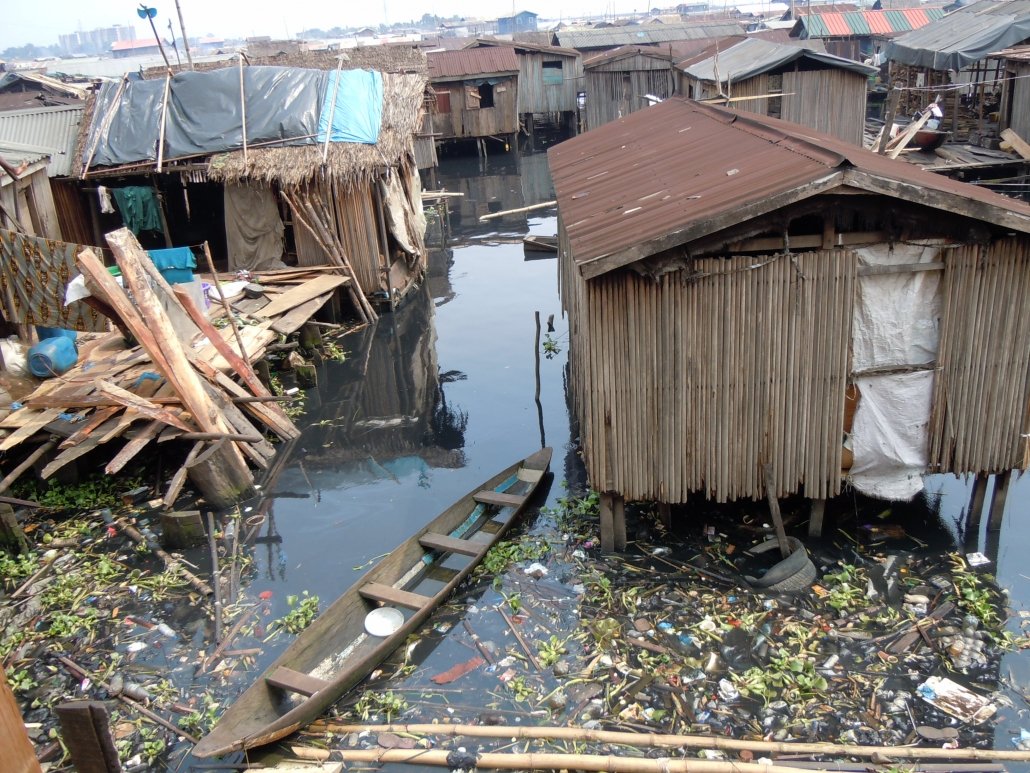Lagos squatter settlements
What is life like in a squatter settlement in Lagos?
In Lagos, the lack of housing and rapid rate of urbanisation has forced millions of people to build their own homes. These are typically on land they do not own. However, in Lagos, some homes have been built on water. Squatter settlements are any collection of buildings where the people have no legal rights to the land upon which they are built. The people are living there illegally and do not own the land. They provide housing for many of the world’s poorest people and offer basic shelter. Homes in squatter settlements are typically constructed from scrap material, including wood, plastic sheeting and corrugated metal when first built. Over time, more sophisticated materials can be used to improve housing quality.
Squatter settlements are not only found in Lagos. They are located in all cities in low-income countries and newly emerging countries worldwide. They can also be called informal settlements, shantytowns, favelas, barrios, or slums.
There are 13 squatter settlements in Lagos; these are:
Squatter settlements are found all over Lagos. They are typically located where more wealthy people do not want to live, including marshland and land close to industry.
Population density is very high in squatter settlements in Lagos. This is because of the lack of available land to build on. The area known to outsiders as Makoko is six distinct “villages” spread across land and water: Oko Agbon, Adogbo, Migbewhe, Yanshiwhe, Sogunro and Apollo. The first four are the floating communities, known as “Makoko on water”; the rest are based on land. In these floating communities, homes are built on stilts on the edge of the Lagos Lagoon. It is estimated that a quarter of a million people live in Makoko.

Makoko Squatter Settlement
The homes are built from materials such as wood and metal sheets. They do not have basic facilities or sanitation.
Most of the residents of Makoko work in the informal economy or make a living by fishing.
Even though Makoko has many problems, the people are very proud and protective of their homes. After all, it is their home. Residents have already taken steps to improve services. Crisscrossing the lagoon bed are pipes, paid for and laid by enterprising residents to bring in clean water—for a modest fee—from boreholes in neighbouring Sogunro.
Makoko Floating School, designed by architect Kunlé Adeyemi, has become the community’s most popular and famous building.
Doctors Without Borders opened a floating clinic in January 2011; although very popular when it launched, it stayed open for less than a year. Today, Makoko continues to be served by a network of informal, unregistered clinics that attend to basic ailments. Several traditional birth attendants deliver Makoko’s babies in an atmosphere of high maternal mortality.
However, the authorities want to demolish it to help improve the city’s image, though residents have nowhere else to live. In recent years, authorities have demolished areas of squatter settlements, such as the one in 2012. Badia, a swampland settlement on the edge of the city’s Apapa Port, was one of the worst-hit targets. More than 15,000 people have lost their homes.
Cities Series – Lagos Week – The Guardian
Inside Makoko: danger and ingenuity in the world’s biggest floating slum
Use the images below to explore related GeoTopics.